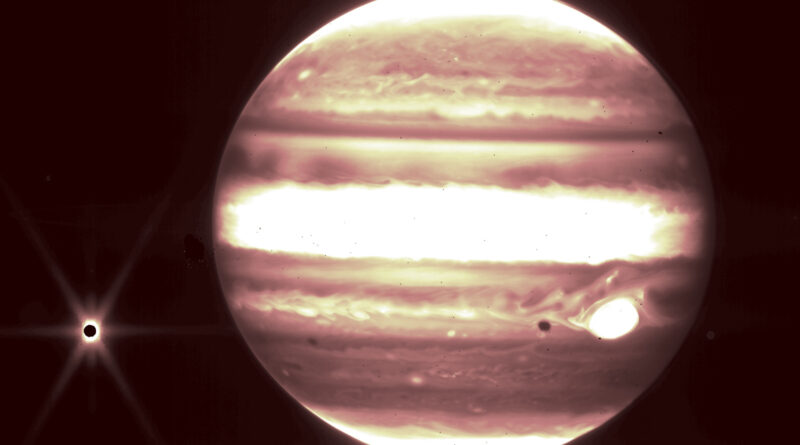James Webb telescope can take detailed photos of our own solar system’s planets and moons
In the past few days, NASA has published superb photos of nebulae, groups of galaxies and even the “deepest” view of the universe taken by the James Webb space telescope. Now the agency has published images of something much closer to the house than everyone’s new favorite telescope – sorry, Hubble! – captured. When the James Webb team calibrated the instrument, the members took photos of Jupiter to see if it can be used to observe celestial objects nearby such as moons and asteroids, as well as other elements like the planet rings and satellites. It turns out that the answer is yes.
A photo taken by the wavelength filter of the near infrared instrument near the telescope (Nirccam) (above) clearly shows the distinct bands of the gas giant and its Europa moon. The large red spot is also perfectly visible, even if it looks white because of how the image has been processed. When the 2.12 micron filter of the Nircam instrument was used, the resulting image showed the Jovian Europa, Thebe, Metis and even the shadow of Europa near the Grand Rouge. And when the team used the Nircam 3.23 micron filter, the resulting image captured some Jupiter rings, as you can see below:
Bryan Holler, one of the scientists who helped plan these observations, said:It should be noted that James Webb captured these images moving through his field of vision in three distinct observations, proving that he is able to find and follow the stars near a celestial body as brilliant as Jupiter. This means that it can be used to study moons in our solar system and could give us the first images of the plumes of material known to discover natural satellites like Europa and the moon of Saturn.
The team also followed the asteroids of the asteroid belt to determine the fastest objects it can observe. They found that he could always obtain objects of collection of objects passing up to 67 milliarcseconds per second in his field of vision. NASA says it is equivalent to following a turtle moving to a mile distance. Like Stefanie Milam, the assistant scientist of the James Webb project, said that these images show that “everything worked brilliantly”. We can expect not only from more detailed images of space in the future, but also information that could shed light on the way in which the first galaxies were formed.




